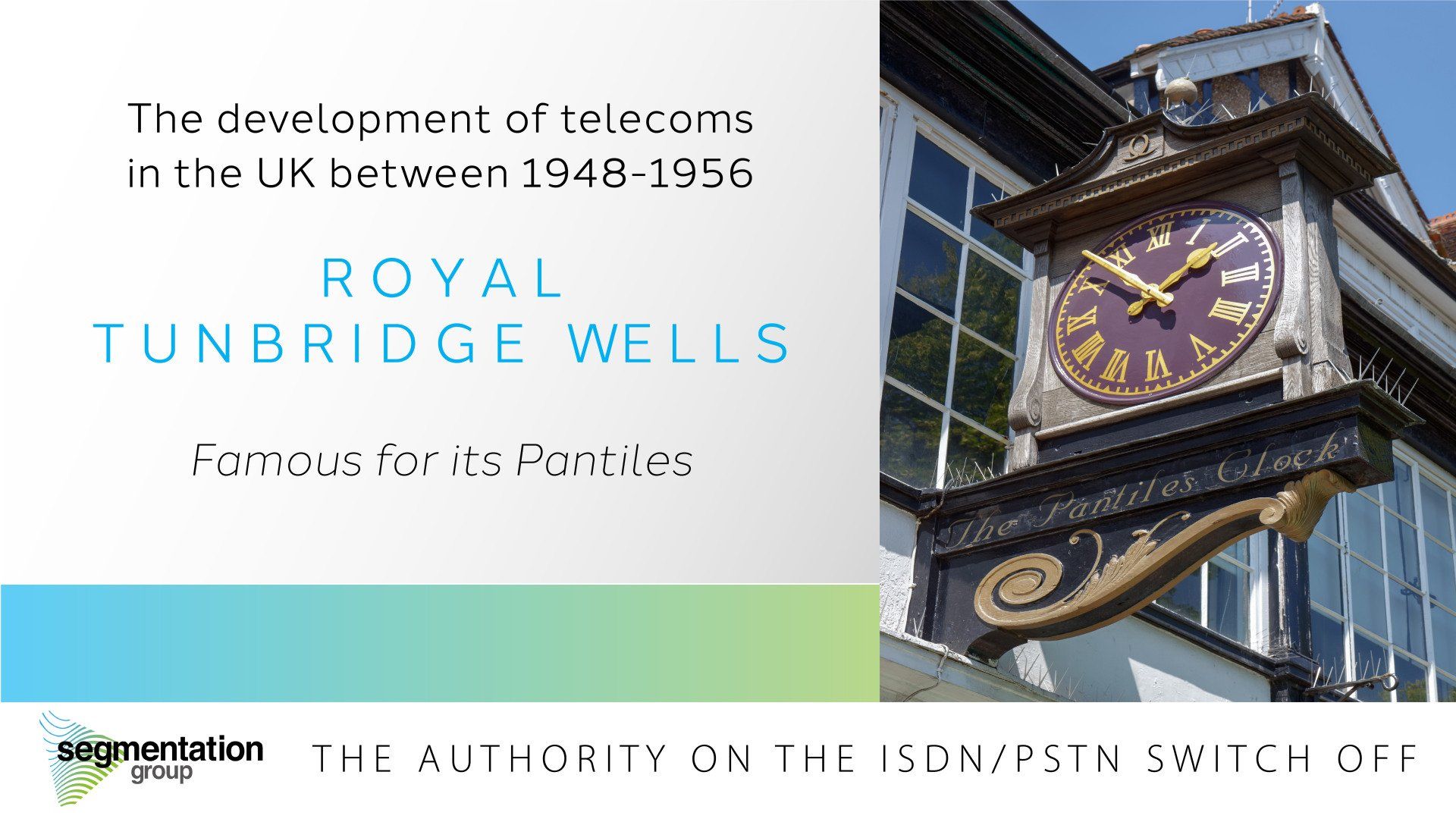The Development of Telecoms - Royal Tunbridge Wells

Tunbridge Wells area comprising parts of Kent, Sussex and Surrey, covers 1,000 square miles between South London and the English Channel.
Residential and rural, it has a diversity of scenery from grazing sheep on chalk downs to hop gardens and orchards on Wealden Clay. Luxurious spring-time blossom brings inevitably to mind that hackneyed phrase "the Garden of England".
Nearly 900 years ago, William, Duke of Normandy, landed at Hastings (now the largest town in the area) for his conquest of England. In 1940, much of the Battle of Britain was fought overhead and the area became part of the "bomb alley" through which the Germans flew to attack London. But in 1944, the area was much used in preparations for the return journey – the invasion of Normandy on the way to Berlin.
Hastings, which is one of the five ancient Cinque Ports, is a thriving seaside resort. Rapid post-war recovery has more than doubled the number of telephone subscribers since 1945. The medieval atmosphere of neighbouring Rye attracts tourists and artists and Bexhill near by, has many private boarding schools and is popular for family holidays. Post-war residential development has been heavy.
The area office town, Tunbridge Wells, recalls the days of Beau Nash and the Dandies taking the waters and promenading on the famous Pantiles: but the town, with its Georgian buildings and extensive commons, is still popular as a place of residence for people working in London.
Industry, including extensive printing works and important railway interests, is at Tonbridge, which is also a market town. A municipal telephone system was operated in Tunbridge Wells until absorption by the National Telephone Company. Development in the Sevenoaks district to the north of the area is rapid; British Railways electric services terminate here and new building estates are presenting problems.
East Grinstead, the other centre of population in the area, is famous for its plastic surgery centre. Bomb damaged buildings have been restored and there are many new building estates. Neighbouring Ashdown Forest is especially popular when autumn tints prevail.
The 54,110 exchange connections and 78,588 stations in the area are served by 107 exchanges, of which 54 are manual. The total staff (excluding telephonists) is 899 and annual revenue £1,150,000.











